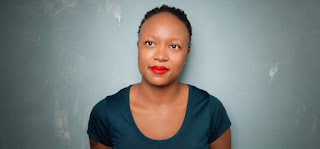Christina Dotson
Christina Dotson is an Eleanor Taylor Bland Crime Fiction Writers of Color Award runner-up. In addition to writing, she is a licensed clinical social worker for a palliative care practice and lives in Kentucky.

Dotson's new novel is Love You To Death.
My Q&A with the author:
How much work does your title do to take readers into the story?Follow Christina Dotson on Instagram and Threads.
I always envy writers who can create the perfect title. Unfortunately, that is not a gift I possess. I initially titled this book A Good Place To Stop, which my agent vetoed right away because it’s obviously terrible. We wanted the book’s title to have a wedding theme, but we knew that choosing one could potentially lead readers to think this was a romance novel. In the end, after several rounds of brainstorming, it was someone from my editor’s team who came up with the title, Love You To Death. And while we know this isn’t necessarily a unique title, it does give readers a deeper understanding of Kayla and Zorie’s bond. It’s a perfect reminder of the book’s themes surrounding loyalty, manipulation and obsession.
How surprised would your teenage reader self be by your novel?
I doubt my teenage self would be surprised by my novel. Even as a child, I loved dark and twisted stories. I read Stephen King’s Pet Sematary when I was thirteen years old, and loved every single word, until it was time to go to bed.
Do you find it harder to write beginnings or endings? Which do you change more?
Beginnings are definitely much harder for me to write than endings. If I can complete a paragraph or two, after multiple rounds of revisions, I’m golden and can take it from there. But figuring out that first line is a million times harder than that final line before the glorious THE END. Of course, since I’m not a plotter, I don’t always know what will happen at the end of the book, but my characters always guide me there, and I never second-guess their decision.
Do you see much of yourself in your characters? Do they have any connection to your personality, or are they a world apart?
Like most writers, I’m an introvert, so writing gives me the chance to explore the more extroverted side of myself through characters. In Love You To Death, I identify more with Kayla—the more reserved of the duo. Zorie is more free-spirited, loud, and wild. So, obviously, she was more fun to write.
What non-literary inspirations have influenced your writing?
I’m a huge fan of reality shows and find a lot of inspiration in them, especially for dialogue. Also, my twenty-two-year career as a social worker has provided me with a spectacular blueprint for human behavior.
--Marshal Zeringue





















